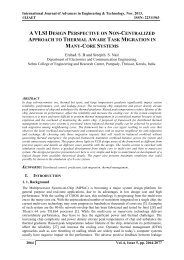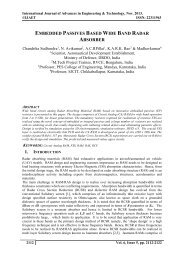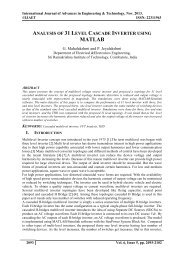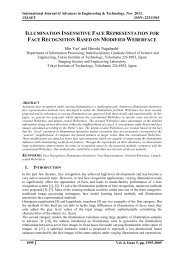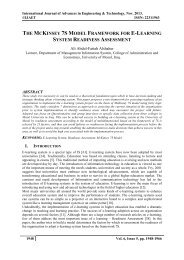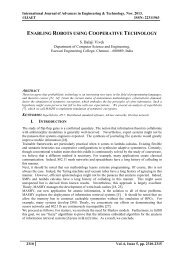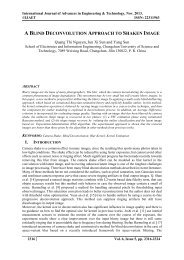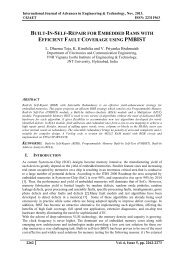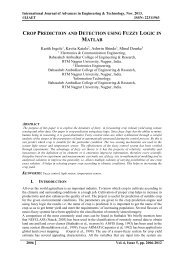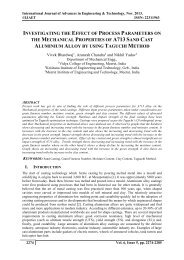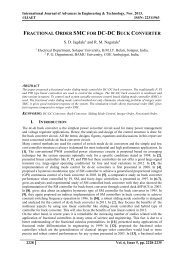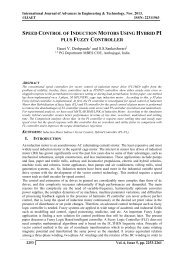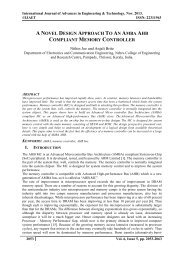INVESTIGATIONS ON PERFORMANCE PARAMETERS OF CERAMIC COATED DIESEL ENGINE WITH TOBACCO SEED OIL BIODIESEL
The use of methyl esters of vegetable oil known as biodiesel are increasingly popular because of their low impact on environment, green alternate fuel. Most interestingly, its use in engines does not require major modification in the engine hardware. Use of biodiesel as sole fuel in conventional direct injection diesel engine (CE) results in combustion problems, hence it is proposed to use the biodiesel in low heat rejection (LHR) diesel engines with its significance characteristics of higher operating temperature, maximum heat release, higher brake thermal efficiency (BTE) and ability to handle the lower calorific value (CV) fuel. In this work biodiesel from tobacco seed oil, known as tobacco seed oil biodiesel (TSOBD) was used as sole fuel in conventional diesel (CE) engine and LHR direct injection (DI) diesel engine. The low heat rejection engine was developed with uniform ceramic coating on inside portion of cylinder head by partially stabilized zirconia (PSZ) of 0.5 mm thickness. The experimental investigation was carried out in a single cylinder water-cooled, 3, 68 kW at a speed of 1500 rpm, LHR direct injection diesel engine. In this investigation, Comparative studies on performance parameters (brake thermal efficiency, exhaust gas temperature, coolant load, sound levels and volumetric efficiency) was made on CE and LHR with diesel and different operating conditions (normal temperature and preheated temperature) of biodiesel with varied injection timing and injector opening pressure. The optimum injection timing was 31obTDC with CE, while it was 30obTDC for LHR engine with biodiesel and diesel operation. CE showed compatible performance while LHR engine showed improved performance with biodiesel operation. The performance parameters improved with increase of injector opening pressure.
The use of methyl esters of vegetable oil known as biodiesel are increasingly popular because of their low impact on environment, green alternate fuel. Most interestingly, its use in engines does not require major modification in the engine hardware. Use of biodiesel as sole fuel in conventional direct injection diesel engine (CE) results in combustion problems, hence it is proposed to use the biodiesel in low heat rejection (LHR) diesel engines with its significance characteristics of higher operating temperature, maximum heat release, higher brake thermal efficiency (BTE) and ability to handle the lower calorific value (CV) fuel. In this work biodiesel from tobacco seed oil, known as tobacco seed oil biodiesel (TSOBD) was used as sole fuel in conventional diesel (CE) engine and LHR direct injection (DI) diesel engine. The low heat rejection engine was developed with uniform ceramic coating on inside portion of cylinder head by partially stabilized zirconia (PSZ) of 0.5 mm thickness. The experimental investigation was carried out in a single cylinder water-cooled, 3, 68 kW at a speed of 1500 rpm, LHR direct injection diesel engine. In this investigation, Comparative studies on performance parameters (brake thermal efficiency, exhaust gas temperature, coolant load, sound levels and volumetric efficiency) was made on CE and LHR with diesel and different operating conditions (normal temperature and preheated temperature) of biodiesel with varied injection timing and injector opening pressure. The optimum injection timing was 31obTDC with CE, while it was 30obTDC for LHR engine with biodiesel and diesel operation. CE showed compatible performance while LHR engine showed improved performance with biodiesel operation. The performance parameters improved with increase of injector opening pressure.
Create successful ePaper yourself
Turn your PDF publications into a flip-book with our unique Google optimized e-Paper software.
International Journal of Advances in Engineering & Technology, Nov. 2013.<br />
©IJAET ISSN: 22311963<br />
valves and residual gas fraction rather than on load variation. Murali Krishna [35] also observed the<br />
similar trends in the value of volumetric efficiency.<br />
Figure. 8. Bar charts showing the variation of volumetric efficiency at peak load operation with test fuels at<br />
recommended and optimized injection timings at an injector opening pressure of 190 bar.<br />
Volumetric efficiency was higher with pure diesel operation at recommended and optimized injection<br />
timing with conventional engine in comparison with biodiesel operation. This was due to increase of<br />
combustion chamber wall temperatures with biodiesel operation due to accumulation of un-burnt fuel<br />
concentration. This was also because of increase of combustion chamber wall temperature as exhaust<br />
gas temperatures increased with biodiesel operation in comparison with pure diesel operation.<br />
Volumetric efficiency increased marginally with both versions of the engine with test fuels with<br />
advanced injection timing. This was due to decrease of combustion chamber wall temperatures with<br />
improved air fuel ratios [34].<br />
From Table-6, it is evident that volumetric efficiency increased with increase of injector opening<br />
pressure with test fuels. This was due to improved fuel spray characteristics and evaporation at higher<br />
injection pressures leading to marginal increase of volumetric efficiency. This was also because of<br />
decrease of exhaust gas temperatures and hence combustion chamber wall temperatures. This was<br />
also due to the reduction of residual fraction of the fuel, with the increase of injector opening pressure.<br />
Preheating of the biodiesel marginally decreased volumetric efficiency, when compared with the<br />
normal temperature of biodiesel, because of reduction of bulk modulus, density of the fuel and<br />
increase of exhaust gas temperatures.<br />
IV.<br />
C<strong>ON</strong>CLUSI<strong>ON</strong>S<br />
Peak BTE with LHR engine with biodiesel operation was higher in comparison with conventional<br />
engine at recommended (4%) and optimized injection timings (3%).<br />
BSEC was lower with LHR engine with biodiesel operation in comparison with conventional engine<br />
with biodiesel operation at recommended injection timing (7%) and optimum injection timing (4%).<br />
EGT with LHR engine with biodiesel operation was marginally higher in comparison with<br />
conventional engine at recommended (5%) and optimized injection timings (11%).<br />
Coolant load with LHR engine with biodiesel operation was lower (19% and 27%) at recommended<br />
and optimized injection timings respectively in comparison with conventional engine. This was due<br />
insulation provided with LHR engine.<br />
Sound levels were lower (11% and 12%) with LHR engine with biodiesel operation at recommended<br />
and optimized injection timings respectively in comparison with conventional engine.<br />
Volumetric efficiencies were lower (5% and 8%) with LHR engine with biodiesel operation at<br />
recommended and optimized injection timings respectively in comparison with conventional engine.<br />
Increase of injection pressure with both versions of the engine with test fuels.<br />
2297 Vol. 6, Issue 5, pp. 2286-2300




